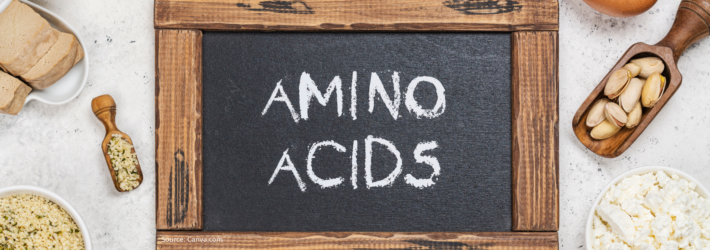Were you told by your doctor to try the FODMAPs diet, but you weren’t given any resources to get started? Maybe you have been searching on the internet, but have become overwhelmed with all of the different and often times conflicting advice.
Reported clinical experience as well as randomized, controlled clinical trials show that the low FODMAPs diet can reduce the symptoms of bloating, abdominal pain, passage of gas and dissatisfaction with stool consistency by 70%.(1)
70% symptom reduction! That is pretty impressive!
There are many different diets that help reduce symptoms of small intestinal bacterial overgrowth (SIBO) and the FODMAPs diet is one of these approaches. For more information on all of the diets, please check out this resource: What’s the Right SIBO Diet for You? How to Know Exactly What to Eat (and Not to Eat) to Stop the Symptoms of SIBO
The FODMAPs diet is extensively researched and has the potential to substantially improve symptoms in a subset of Irritable Bowel Syndrome (IBS) patients. Remember, there is an overlap between IBS and SIBO, so even though most of the research is done in the IBS population, it can also help those with SIBO. I recommend giving it a try to see how it works for you and here are 6 tips to help increase your success with the low FODMAPs diet.
First, a little background. FODMAPS is an acronym that stands for fermentable oligo-, di-, monosaccharides and polyols.(2) The diet was developed in Australia by a group of researchers who noticed a pattern of food intolerances with IBS patients. Foods are grouped into categories based on these short chain, highly fermentable and osmotic carbohydrates.(2)
What Does Short Chain, Highly fermentable and Osmotic Mean?
“Short chain” means that the carbohydrate molecule is of small size compared to the large carbohydrate molecules found in starches, such as rice and potatoes.
“Highly fermentable carbohydrates” means that the bacteria living in your digestive tract ferment, in other words, break down these difficult to digest carbohydrates. If you have too much bacteria in your small intestine, hint: those of us with SIBO, then this happens a lot sooner and higher up in the digestive tract. The byproducts of these reactions creates lots of gas and bloating!
In addition, as this carbohydrate molecule moves through your intestines, the body says “wait a minute, this should have been digested ages ago, it shouldn’t still be here”, so the body tries to balance what’s going on outside of the intestine with what’s going on inside of the intestine by bringing more fluid into the intestinal tract. This is what “osmotic” means. Net result? Diarrhea, abdominal pain, nausea and in people prone to constipation, more constipation.
What are Those Scientific Sounding Terms on the Food Lists?
FODMAPs are categorized based on their chemical structure. These categories are what you will see on most food lists of “eat this/avoid this” and they include:(2)
- excess fructose in excess of glucose: sweeteners, certain fruits and vegetables
- lactose: found in dairy products
- fructans: found in wheat, rye, vegetables and many other foods
- galactooligosaccharides (GOS), also known as galactans: found in legumes
- sugar polyols: sweeteners, certain fruits and vegetables
Some of these are more difficult to digest than others and it depends on the types of enzymes that our body produces (enzymes are proteins that help digest our food), what type of bacteria we house in our guts, if small intestinal bacterial overgrowth is present and many other factors.
To be honest, everyone has difficulty digesting some of these FODMAPs, whether or not you have IBS or SIBO.(3) If you’ve ever heard the rhyme, “beans, beans, they’re good for the heart, the more you eat, the more you fart” then you know what I mean!
It’s just that some of us have more problems with these foods than others.
The premise of this diet is to find out what specific types of carbohydrates you have a problem with by eliminating them and then adding them back and watching for symptoms. The diet has two phases: An elimination phase and a reintroduction phase. This article will focus on the elimination phase, which is the starting point for the FODMAPs diet.
Here Are 6 Tips to Help You Start the FODMAPs Diet:
1) How to Start
The diet begins with an elimination phase.
There are two approaches to starting the FODMAPs diet: One is the top-down approach and another is the bottom-up approach.(4)
Let me explain by using an example. One of my clients had severe diarrhea and was diagnosed with IBS. She was in her mid 40’s and her diarrhea was so bad that she had to wear adult diapers and keep a change of clothes in her office. Sometimes, just standing up from her desk would cause a flow of diarrhea from gravity alone. Even though she was so miserable, she took one look at the low FODMAPs diet and said “there’s no way I can eliminate all of those foods at once.”
In this case, we did the bottom up approach. We eliminated one of the biggest FODMAP offenders-lactose. Just that one change alone helped control half of her diarrhea symptoms. After that, she was sold and was ready to do the top down approach, which was to eliminate all FODMAPs at once for a certain amount of time.
The top-down approach will give you the best results in the shortest amount of time, but only if you are ready to commit to such a big change. If not, then go with the bottom-up approach.
2) Give It Enough Time to Work
You may not see symptom improvement in just one day of following the elimination phase of the diet. The shortest amount of time that I have seen improvement in my clients is around 48 hours but many of the research studies take away all FODMAPs for at least 4-6 weeks.(5) If a client is skeptical or is not very motivated because they are unsure if giving up the FODMAPs will help their symptoms, then we will shoot for 2 weeks.
It is important that you reach a baseline, meaning you need to find a point in time when your symptoms are reduced enough to improve your quality of life. How long this will take depends on you. You should assess your symptoms before starting the diet and make a determination of what level of symptom improvement would make you happy. This will help you determine how long you are willing to give the elimination period, whether it be 2 weeks to 6 weeks.
3) Dose and Type Matters
You may find that a food is considered low FODMAP in some resources on the internet, but at higher servings, they can sneak up on you and turn into a high FODMAP food. How unfair!
For example, in the Monash database,(6) sweet potatoes are low FODMAP at a half cup but if you eat 1 cup of them, then they are considered high FODMAP. Two Brussels sprouts are low FODMAP but eat four, you are moving into high FODMAP territory.
Studies have tested the dose response of FODMAPs by giving people more and more and then measuring their symptoms. One study found that as a particular FODMAP was doubled, the patients symptoms increased by 6-fold!(7)
What is really crazy is that broccoli is considered low FODMAP, but if you like just the stems, which seems to be all you get when you buy a frozen bag of broccoli, give them to someone else because stems are high in FODMAPs.
So just because a food is listed as low FODMAP, doesn’t mean it remains low FODMAP as the amount increases. Also, watch out for those broccoli stems!
4) Where Can I Find an Accurate List of FODMAPs?
If you are looking on the internet to try and find information about the FODMAPs diet, you might have already come across lists of what to eat and what not to eat that are different. That’s frustrating! One list that I have says that okra is high FODMAP, while another list says it is low FODMAP. This makes it very confusing to figure out what to eat!
I’ll tell you why they are different. Defining what is “low FODMAP” and “high FODMAP” has taken extensive research and time to measure the types and amounts of FODMAPs in the hundreds of different foods.(8) Books that were written 10 years ago are now out of date and so are some handouts and blogs that circulate on the internet.
Since all of this FODMAP composition research is done at Monash University, the Monash app(8) is the most current source of information. This app uses a traffic light system to rate the amount of FODMAPs in various foods based on specific serving sizes. Green is low FODMAP, yellow is moderate and red is high. Remember, green can go to red if a serving size is exceeded on some food items.
5) Look for Hidden FODMAPS
Reading food labels is important in order to avoid hidden FODMAPs. If you are not looking for them, they can give you quite a surprise and upset your progress.
Let’s say you have been doing well on the elimination phase of the FODMAP diet for the last 2 weeks. Your symptoms are being relieved-the diarrhea has pretty much stopped and the bloating has greatly improved. You have been enjoying a specific brand of gluten free bread (wheat is high in FODMAPs) and coasting along, feeling happy with your food choices.
But when you went to the store to purchase your usual brand of gluten free bread, they were out. So you were forced to switch to another brand-all of the while, making sure that it was still gluten free. You didn’t think anything of it, but that evening, you had some pretty bad bloating and the next morning, diarrhea.
What went wrong?
Just because the bread was gluten free doesn’t mean that it is low in FODMAPs. When you got around to reading the label, you discovered that it was high in excess fructose (high FODMAP). Argghhh…..At least you found the culprit, although you wished you had looked before eating! The same thing can happen with supplements. As an example, probiotics are famous for having hidden FODMAPs, so always read the labels.
6) Watch Out When Eating Out
It can be tough to eat out while on the elimination phase of the FODMAPs diet. The main FODMAP ingredients that are an issue at restaurants are typically onions and garlic. These can be hidden in sauces and you won’t know they are there until your symptoms flare afterwards.
It is best to choose simple meals containing foods that you can actually see. Stick with un-breaded meats and allowed vegetables and gluten-free grains without sauces.
To reduce stress, check the restaurant menu online before going, so that you will already have an idea of what you can order. Also, you can ask the restaurant staff if there are any hidden ingredients that you aren’t sure about.
If you are travelling, you can get hotels with kitchens and cook your own meals. I know, not as much fun, especially since one of the best perks of traveling is not having to cook and do dishes, but you could at least do this while on the elimination phase.
Give the FODMAP Diet a Try
The low FODMAPs diet does not appear to improve the symptoms of every IBS subject but when done right, it can help you identify what foods might be contributing to your symptoms. In some cases, it can give you a huge relief from your symptoms.
You will never know until you give it a try.
The FODMAPs diet should be individualized and the strict elimination phase should not be followed for life.(9) It is important that you reintroduce foods in a stepwise manner and note any symptoms.
The majority of the research studies that show the efficacy of the FODMAPs diet to help reduce GI symptoms have used trained dietitians or other specifically trained healthcare practitioners.
There are no studies looking at the impact of the diet in individuals who have been self taught on the internet or from printed material.(10)
If you are new to the FODMAPs diet and need help starting it successfully, then I would be happy to work with you. I am not only experienced in the FODMAP diet approach, but I have also done it myself.
Please click here if you would like to have a free, 30 minute SIBO Troubleshooting Consultation. During this session, I will assess your diet history and help you get started on the FODMAPs diet.
Sincerely,
Darla
References:
- Nanayakkara WS, Skidmore PM, O’Brien L, Wilkinson TJ, Gearry RB. Efficacy of the low FODMAP diet for treating irritable bowel syndrome: The evidence to date. Clin. Exp. Gastroenterol. 2016;9:131–42. Available at: http://www.ncbi.nlm.nih.gov/pubmed/27382323 [Accessed April 18, 2018].
- Shepherd S, Parker F, Muir J, Gipson PR. Dietary triggers of abdominal symptoms in patients with irritable bowel syndrome: randomized placebo-controlled evidence. Clin Gastroenterol Hepatol. 2008;6:765–771.
- Shepherd SJ, Parker FC, Muir JG, Gibson PR. Dietary triggers of abdominal symptoms in patients with irritable bowel syndrome: randomized placebo-controlled evidence. Clin. Gastroenterol. Hepatol. 2008;6(7):765–71. Available at: http://www.ncbi.nlm.nih.gov/pubmed/18456565 [Accessed March 8, 2013].
- Halmos EP. When the low FODMAP diet does not work. J. Gastroenterol. Hepatol. 2017;32:69–72.
- Varjú P, Farkas N, Hegyi P, et al. Low fermentable oligosaccharides, disaccharides, monosaccharides and polyols (FODMAP) diet improves symptoms in adults suffering from irritable bowel syndrome (IBS) compared to standard IBS diet: A meta-analysis of clinical studies. PLoS One. 2017;12(8):1–16.
- Monash University. Low FODMAP Diet App. 2017. Available at: https://www.monashfodmap.com/i-have-ibs/get-the-app/.
- Goebel-Stengel M, Stengel A, Schmidtmann M, et al. Unclear abdominal discomfort: Pivotal role of carbohydrate malabsorption. J. Neurogastroenterol. Motil. 2014;20(2):228–35. Available at: http://www.ncbi.nlm.nih.gov/pubmed/24840375 [Accessed April 22, 2018].
- Varney J, Barrett J, Scarlata K, et al. FODMAPs: Food composition, defining cutoff values and international application. J. Gastroenterol. Hepatol. 2017;32:53–61.
- Barrett JS. How to institute the low-FODMAP diet. J. Gastroenterol. Hepatol. 2017;32:8–10.
- Hill P, Muir JG, Gibson PR. Controversies and recent developments of the low-FODMAP diet. Gastroenterol. Hepatol. 2017;13(1):36–45.



